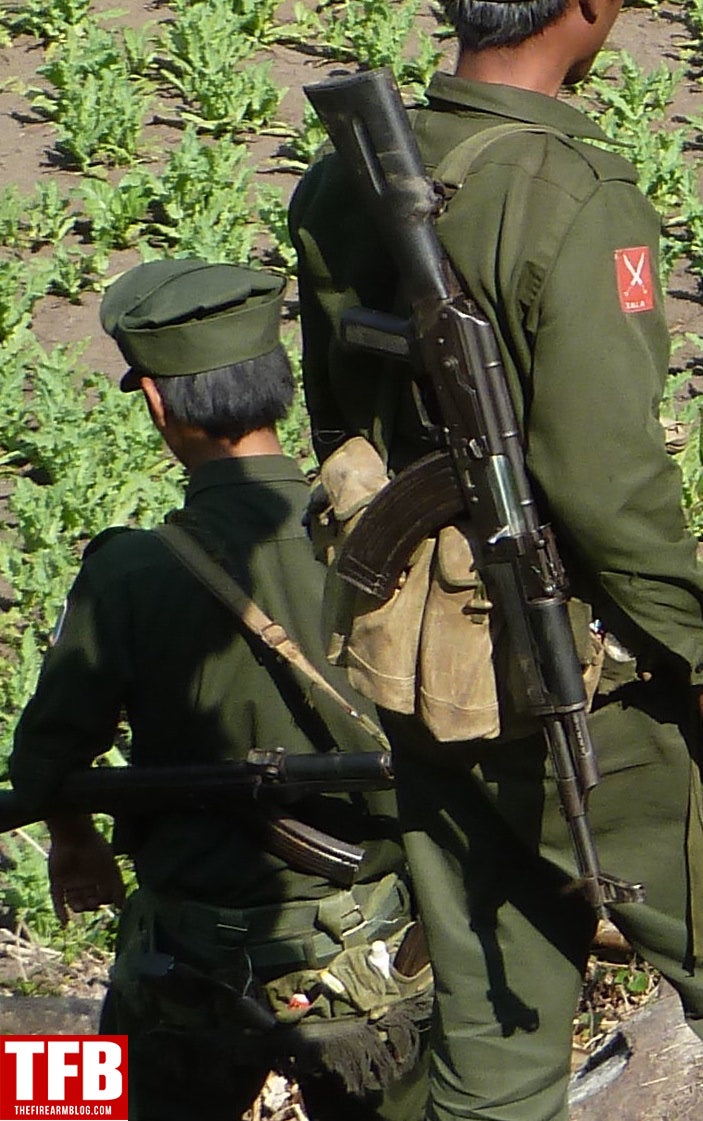Although located in some of the most remote parts of the Burmese jungle, the Kachin Independence Army has been able to build up an impressive arms assembly capability in the northern regions of the country of Myanmar. It is very difficult to acquire information and proof of Kachin facilities, but current speculation leans more towards the side of assembly of prefabricated components that are being imported rather than an actual indigenous arms production scheme and supply chain. A previous Kachin design was reported on in January of 2013 through TFB, that of a Type 81-based rifle grenade launcher. We’ll be covering this weapon system soon as the design has subsequently been upgraded in addition to numerous variants have been added to it.
Today we’ll be looking at a new Kachin design that has actually been in active service since at least March of 2014 when it was observed being issued out to members of the Ta’ang National Liberation Army, a rebel group in the border areas that is strongly allied with the Kachin Independence Army and the Shan State Army- South. A majority of the photographs we have gathered of the Kachin Kalashnikov show it in use by the TNLA, but it has been seen in use by other groups as well.

The exterior sides of the magazine is of a certain waffle pattern with large rectangles at the top and bottom, and three larger ones in the middle. It can also take standard 7.62x39mm Kalashnikov-patterned magazines. Source- Author
The rifle is of an AKM-patterned configuration with a stamped steel reciever, chambered in 7.62x39mm. The fixed stock, handguards, and pistol grip are of a polymer construction and so is the magazine body but there might be a stamped metal variant that is also in service. Some of the features unique to the Kachin AKM are that it lacks threads at the muzzle and thus isn’t fitted with any compensator.

This picture actually shows the older Kachin variant of Type 81’s sights installed on the new AKM, indicative of cross-component manufacture/assembly. Source- Author

The pistol grip is unique because it has a square instead of round bottom portion to act as a palm stop. Source- Author

There are also two sling swivel locations on the left side of the stock, one close to the buttstock in a traditional point while another one close to the receiver. However, the spots are simply hollowed out portions so a user would have to unscrew his existing sling swivel to fit it into the other spot. Source- Author
There also has been a variant of the Kachin Kalashnikov equipped with an M203-patterned UBGL. The launcher appears to be a direct copy of the Burmese MA-4 40x46mm UBGL that is married to the host 5.56x45mm MA-1 rifle it is attached to. It appears that the Burmese launcher might be a direct copy of the Turkish T-40, also of a similar pattern. Israel’s IWI employs the T-40 on the GTAR-21, in use with Indian forces. Burma and Israel have historically and continue to have very strong defense armament ties so that is most likely the route that the launcher would have taken.
 Your Privacy Choices
Your Privacy Choices



